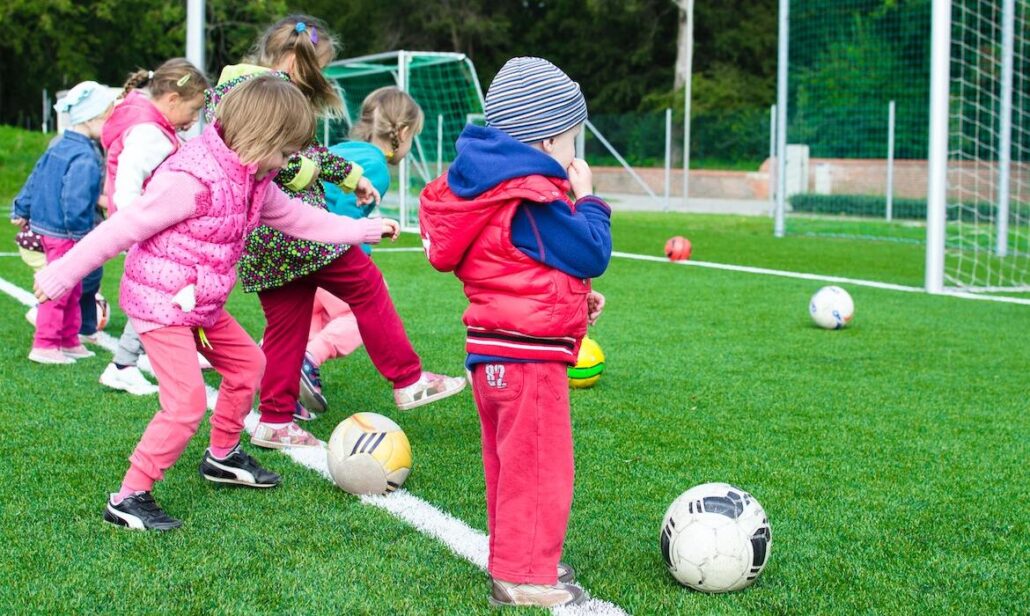Soccer—also known as football in most parts of the world—is the most popular sport on the planet. With over 250 million players across more than 200 countries, it's a universal language that brings people together. Whether you're looking to play the game or just want to enjoy watching it with a better understanding, knowing the basic rules of soccer is the first step.
In this beginner’s guide, we’ll break down the essential rules of soccer, from how the game is played to what constitutes a foul. Let’s kick things off!
What Is Soccer?

Soccer is a team sport played between two teams of 11 players each on a rectangular field with goals at either end. The objective of the game is to score more goals than the opposing team by getting the ball into the opposing goal.
The Basic Setup
Before diving into the rules, here’s how a standard soccer match is structured:
Number of Players
-
Each team has11 playerson the field, including1 goalkeeper.
-
A team must have at least7 playersto start or continue a match.
The Field
-
Soccer is played on arectangular fieldwith agoalat each end.
-
The field is divided intotwo halves, with acenter circlefor kick-offs.
-
The penalty area and goal area are marked near each goal.
Duration of the Game
-
A standard soccer match consists oftwo 45-minute halves, with a15-minute halftimebreak.
-
Additional time, known asinjury time or stoppage time, may be added at the end of each half to make up for lost time due to substitutions, injuries, or delays.
-
In some matches, especially during tournaments,extra timeandpenalty shootoutsmay be used to determine a winner.
How the Game Starts
-
The match begins with akick-offfrom the center circle.
-
The team that wins thecoin tosschooses either the side they want to defend or to take the first kick-off.
-
After a goal is scored, the opposing team restarts the game with a kick-off.
Objective: Score Goals
The main goal (pun intended) in soccer is toscore goalsby sending the ball into the opponent’s net.
-
Agoalis scored when the entire ball crosses the goal line between the goalposts and beneath the crossbar.
-
The team with the most goals at the end of the match wins.
Basic Rules of Play
1. No Hands Allowed (Except the Goalkeeper)
-
Field playerscannot use their hands or armsto touch the ball during play.
-
Onlygoalkeepersare allowed to use their hands, and only within their ownpenalty area.
2. In and Out of Play
-
The ball isin playas long as it remains within the field boundaries.
-
The ball isout of playwhen:
-
It crosses thesidelines(touchlines) orgoal lines.
-
The referee stops play for a foul, injury, or other reason.
-
3. Offside Rule
-
A player is in anoffside positionif:
-
They are nearer to the opponent's goal line than both the ball and the second-last defenderwhen the ball is played to them, and
-
They areactively involvedin the play.
-
-
Being offside is only penalized if the player gains an advantage or interferes with play.
This rule is designed toprevent goal-hangingand encourage fair play.
4. Fouls and Misconduct
-
Common fouls include:
-
Tripping or pushing an opponent
-
Holding or pulling shirts
-
Handball (deliberately using hands/arms to control the ball)
-
-
Serious fouls can result in:
-
Yellow card– a warning for unsporting behavior.
-
Red card– immediate ejection from the game (two yellow cards also equal a red).
-
-
Teams cannot replace a player who has been sent off.
Set Pieces: Restarts in the Game
When the ball goes out of play or a foul is committed, the game restarts with aset piece:
1.Throw-In
-
Awarded when the ball crosses the sideline.
-
The opposing team of the last player to touch the ball gets the throw-in.
-
The player must throw the ball with both hands from behind and over the head, with both feet on the ground.
2.Goal Kick
-
Awarded to the defending team when the attacking team last touches the ball before it crosses the goal line (without a goal being scored).
-
Taken from anywhere within thegoal area.
3.Corner Kick
-
Given when the ball crosses the goal line last touched by the defending team.
-
Taken from the corner nearest to where the ball went out.
-
It's a chance to deliver the ball into the penalty area for a scoring opportunity.
4.Free Kick
-
Awarded after most fouls.
-
Direct free kick: Can be shot directly into the goal.
-
Indirect free kick: Must touch another player before a goal can be scored.
5.Penalty Kick
-
Awarded when a foul occursinside the penalty area.
-
One-on-one between the kicker and the goalkeeper from thepenalty spot.
Referees and Officials
-
Therefereeenforces the rules, makes decisions on fouls, and controls the match.
-
Twoassistant referees(linesmen) help signal offsides, throw-ins, and fouls.
-
In some competitions,VAR (Video Assistant Referee)is used to review critical decisions.
Common Soccer Terms Beginners Should Know?

Here are a few essential terms to help you follow the game:
| Term | Meaning |
|---|---|
| Dribbling | Moving the ball with your feet while controlling it |
| Tackle | Attempt to take the ball from an opponent |
| Pass | Kicking the ball to a teammate |
| Header | Using the head to play the ball |
| Cross | A pass into the penalty area from the sideline |
| Save | When the goalkeeper stops a shot |
| Clean Sheet | When a team prevents the opponent from scoring |
Basic Soccer Positions
Each player on a soccer team has a specific role:
-
Goalkeeper (GK): Protects the goal.
-
Defenders: Stop the opposing team from scoring.
-
Midfielders: Link the defense and attack; often control the pace of the game.
-
Forwards/Strikers: Focus on scoring goals.
Formations like 4-4-2 or 4-3-3 describe how players are positioned on the field.
Tips for Watching and Enjoying Soccer
-
Watch a few gameswith commentary to learn tactics and rules in context.
-
Follow a team or leagueto build your understanding over time.
-
Join a local recreational teamor play pickup games to gain firsthand experience.
-
Practice ball control—it’s one of the most fundamental skills in the sport.
Final Thoughts
Soccer is a simple game at its core, but it's also rich in strategy, culture, and passion. Understanding the basic rules of soccer gives you a solid foundation to appreciate the sport whether you're on the field or in the stands.
Whether you're cheering for your favorite team, kicking the ball around with friends, or just trying to keep up with the World Cup buzz, you're now better equipped to join the global soccer community.









